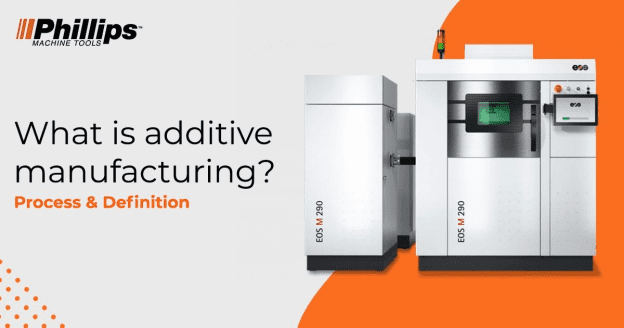Phillips Corp: What is additive manufacturing? Process & Definition
Additive manufacturing – first developed by Hideo Kodama of the Nagoya Municipal Industrial Research Institute, is an immaculate way of forming shaped objects with the use of advanced technology instead of molding or machining. It is used to create a plethora of objects like jet engine parts, medical devices, surgical implants. In simpler words, it is the industrial production name for three-dimensional printing. The three-dimensional objects are created by intricate layering.
History of Additive manufacturing:
Additive manufacturing was identified to be around 1987, which is the same year when stereolithography – the machine that used three-dimensional printing technology was invented.
During those times Ultraviolet light-sensitive liquid polymers in the form of thin layers were solidified with a laser to form objects by three-dimensional systems. Photopolymerisation was also used as a method of Additive manufacturing. Photopolymerization is a process in which an object changes shape when exposed to Ultraviolet rays hence UV sensitive resins are applied through photopolymerization while the laser is used as a parameter.
The Procedure:
There is not one particular procedure when it comes to Additive Manufacturing, there are multiple procedures like:
Directed Energy Deposition-Arc
In Directed Energy Deposition-Arc, arc welding power sources are used. Directed Energy Deposition-Arc is usually done with the use of robotic welding equipment. A wire is used as a material source to carry out the process wherein a predetermined plan is created for the desired design and the structure of the object to be made.
Sheet Lamination
Sheet Lamination is done in two ways:
a) Ultrasonic additive manufacturing (UAM)
Ultrasonic additive manufacturing (UAM) is used to join metal sheets by the process of ultrasonic welding – the metal sheets ( usually thin) are held together under pressure and high-frequency ultrasonic vibrations are applied to it.
b) Laminated object manufacturing (LOM)
Powder Bed Fusion
In Powder Bed Fusion thermal print heads, electric beams or lasers fully or partially melt the object into desired shape and size, and the excess powder is removed by blasting it.
Material Extrusion
The technique of temperature control or chemical bonding is used in the process of Material Extrusion. A heated nozzle is mounted on a movable arm, through which polymers are forced out. The bed moves vertically and the nozzle horizontally which causes the melted material to be built in layers.
Directed Energy Deposition
Directed Energy Deposition is one of the simplest ways of Additive manufacturing. Wire, filament, powder, or feedstock are melted using either an electric beam gun, electric arc, or a laser that is mounted on the horizontally moving arm which melts the material as the bed moves vertically.
Binder Jetting
An adhesive (usually a liquid binder) and powdered materials are layered alternatively on x, y, and z axes by a moving three-dimensional printing style head.
In general, in all of the above processes objects are created layer-wise with precise geometrical shapes. Materials like metal, ceramic, plastic, thermoplastic, and biochemicals like zinc, phosphate, silicon, and calcium are used.
The future:
Additive manufacturing in India
Additive manufacturing in India is becoming extremely famous because of the government’s plan to make India known as a manufacturing hub in the world. Startups that use additive manufacturing and large companies entering the 3D printing industry have increased.
Hybrid additive subtractive manufacturing
While additive manufacturing is fusing materials to get the desired shape there is another method called subtractive manufacturing in which blocks of materials are cut off to get the desired shape. Now every material that is formed using additive manufacturing will need milling for the finishing of the material, which means if additive manufacturing and subtractive manufacturing can be performed by a single device, the manufacturing process becomes smooth and simple. Hybrid additive subtractive manufacturing will be the most essential tool in the field of manufacturing in the future.
This content was originally published on the Phillips Corp website.

